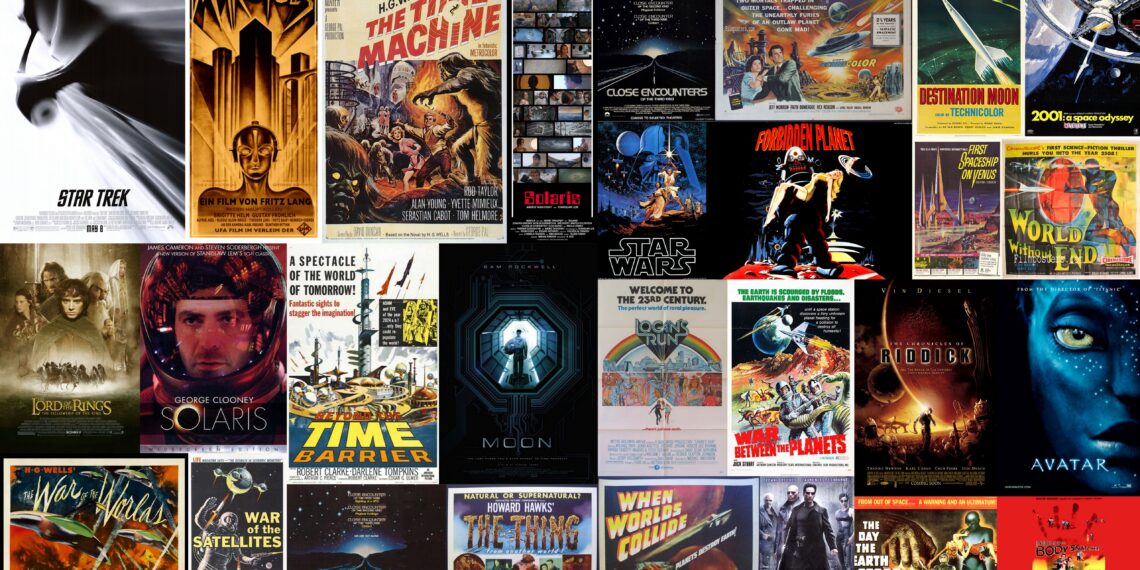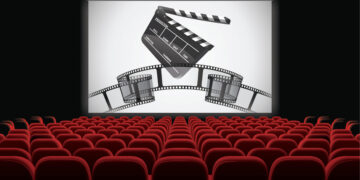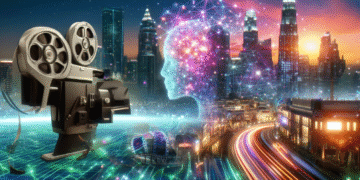Unraveling the Essence of Action: From Adrenaline to Artistry
Action films deliver visceral thrills, often prioritizing spectacle and excitement. They use dynamic visuals and narratives focused on physical feats.
1. The Core Elements of Action Cinema
Action films hinge on protagonists facing perilous situations, often involving violence, chases, and combat. High stakes, ticking clocks, and formidable antagonists are common. These elements work together to create a gripping and suspenseful experience for viewers. The genre thrives on pushing boundaries and delivering intense emotional responses.
2. Evolution and Subgenres
The action genre has diversified into numerous subgenres, including martial arts films, spy thrillers, and disaster movies. Each subgenre brings unique thematic and stylistic elements to the table. For instance, martial arts films emphasize choreographed combat, while spy thrillers focus on espionage and intrigue. This evolution has allowed action films to remain fresh and appeal to a wide audience.
3. The Role of Stunts and Special Effects
Stunts and special effects are vital components of action films, enhancing the visual spectacle and realism. Practical effects, such as explosions and car chases, are often combined with CGI to create breathtaking sequences. The effectiveness of these elements hinges on their ability to immerse the audience and heighten the sense of danger and excitement.
4. Notable Trends in Modern Action Films
Modern action films increasingly incorporate complex narratives and character development alongside the traditional action set pieces. There’s a growing emphasis on practical stunts and grounded action sequences. Many films are also experimenting with innovative visual styles and incorporating elements from other genres. This allows for a more immersive and engaging viewing experience.
The Emotional Spectrum of Drama: Crafting Stories that Resonate
Drama, a genre deeply rooted in human experience, aims to evoke a range of emotions, holding a mirror to our lives and prompting reflection. It explores conflicts, relationships, and moral dilemmas, captivating audiences through compelling narratives.
| Feature | Description | Example |
|---|---|---|
| Emotional Range | Wide spectrum, from joy and love to sorrow and despair. | Love stories, family sagas, tragedies |
| Conflict | Central element, driving the narrative and creating tension. | Internal struggles, external adversaries |
| Character Depth | Complex and relatable characters with flaws and strengths. | Protagonists facing moral dilemmas |
| Themes | Explores universal themes like love, loss, justice, and redemption. | Social commentary, historical events |
| Resolution | Offers a sense of closure, though not always a happy ending. | Catharsis, acceptance, change |
Data Source: General observations of film trends, 2024.
1. The Power of Character-Driven Narratives
At the heart of any compelling drama lies the power of its characters. These individuals, with their inherent flaws and relatable struggles, serve as the emotional core of the story. Effective character development allows the audience to connect with their journeys, empathize with their pain, and celebrate their triumphs. The narrative arc is often shaped by the characters’ decisions and how they navigate the challenges they face, creating a deeply personal and engaging viewing experience.
2. Exploring Universal Themes
Drama frequently delves into universal themes that resonate across cultures and generations. These themes, such as love, loss, betrayal, and redemption, provide a framework for exploring the complexities of the human condition. By examining these themes through the lens of specific characters and situations, drama offers insights into our shared experiences and allows us to contemplate the fundamental questions of life.
3. The Role of Conflict in Driving the Plot
Conflict is the engine that drives dramatic narratives forward. Whether it’s an internal struggle within a character, a clash between individuals, or a battle against external forces, conflict creates tension and compels the audience to invest in the outcome. The resolution of these conflicts, however satisfying or bittersweet, often provides a cathartic release and leaves a lasting impression.
4. Evoking Emotional Responses
A primary goal of drama is to evoke strong emotional responses in the viewer. This can be achieved through a variety of techniques, including powerful performances, evocative cinematography, and carefully crafted dialogue. By tapping into our empathy and vulnerability, drama can transport us to another world, allowing us to experience a range of emotions from joy and hope to sadness and despair. The skill lies in eliciting these emotions authentically and meaningfully, enhancing the overall impact of the story.
Comedy’s Role in Society: Laughter as a Lens on Culture
Comedy, far from being mere entertainment, acts as a critical mirror reflecting and shaping societal norms, values, and anxieties. It provides a unique platform for examining complex issues through humor.
1. Social Commentary and Critique
Comedy often serves as a powerful tool for social commentary, allowing comedians to address sensitive topics like politics, religion, and social inequality in a way that is both engaging and thought-provoking. By using satire, irony, and parody, they can expose hypocrisy, challenge authority, and spark public discourse on important issues. Comedians in 2024 and 2025 have increasingly used online platforms to reach wider audiences with their commentary.
2. Catharsis and Emotional Release
Laughter provides a much-needed emotional release, acting as a coping mechanism during times of stress or uncertainty. Comedy allows audiences to confront difficult emotions, such as fear, anger, or grief, in a safe and controlled environment. By finding humor in shared experiences, people can connect with one another and feel less alone in their struggles.
3. Cultural Transmission and Identity
Comedy can also play a role in cultural transmission, preserving traditions, and shaping identity. Through jokes, stories, and characters, comedians often reflect the values, beliefs, and customs of a particular community or culture. This helps to reinforce a sense of belonging and shared identity among audience members.
The Science Fiction Frontier: Imagination Meets Innovation
Science fiction, often shortened to sci-fi, explores speculative concepts such as advanced technology, time travel, parallel universes, and extraterrestrial life. It blends scientific plausibility with imaginative storytelling, prompting audiences to ponder the possibilities and consequences of future innovations.
1. Technological Advancements and Society
Science fiction frequently portrays the impact of technological advancements on society. Stories explore how inventions like artificial intelligence, virtual reality, and genetic engineering could reshape human interactions, social structures, and ethical considerations. These narratives offer a platform to examine both the potential benefits and the potential dangers of unchecked technological progress.
2. Exploring the Cosmos and Beyond
The vastness of space provides a limitless canvas for science fiction. Stories often depict interstellar travel, encounters with alien civilizations, and the colonization of other planets. These cosmic adventures allow for the exploration of philosophical questions about humanity’s place in the universe and the potential for life beyond Earth.
3. Dystopian and Utopian Visions
Science fiction often presents contrasting visions of the future, ranging from dystopian societies controlled by oppressive regimes to utopian worlds where technology has solved humanity’s problems. These scenarios serve as cautionary tales or aspirational ideals, prompting reflection on the choices that shape our future.
Horror’s Psychological Impact: Exploring Fear and Fascination
Horror films delve into our deepest anxieties, exploring themes of death, the unknown, and the monstrous, often reflecting societal fears and cultural anxieties back at us in a thrilling, albeit unsettling, way.
1. The Appeal of Fear
Why do we willingly subject ourselves to fear? Some psychologists suggest that watching horror films allows us to experience fear in a safe and controlled environment. This can be a form of catharsis, releasing pent-up emotions and anxieties. Furthermore, the physiological responses to fear, such as increased heart rate and adrenaline, can be perceived as exciting and even pleasurable by some individuals. It’s a way to test our resilience and coping mechanisms without real-world consequences.
2. The Role of Suspense and Anticipation
Horror isn’t just about jump scares; it’s about building suspense. The anticipation of something frightening can be just as, if not more, terrifying than the actual event. Filmmakers use techniques like slow camera movements, eerie music, and unsettling sound design to create a sense of dread that lingers long before the monster appears. This psychological manipulation keeps viewers on the edge of their seats, heightening the emotional impact of the film.
3. Psychological Themes in Horror
Many horror films explore complex psychological themes such as trauma, guilt, and identity. Characters often grapple with their inner demons, and the external horrors they face can be seen as manifestations of their internal struggles. Films like “The Babadook” use the monster as a metaphor for grief and depression, while others explore the dark side of human nature through depictions of violence and sadism. This depth allows horror to resonate on a deeper level than simple entertainment.
Documentaries as Truth-Tellers: Capturing Reality Through Film
Documentaries offer a window into real-world events, people, and issues, striving to present factual information and insights through the art of filmmaking. They aim to inform, educate, and sometimes provoke social change by capturing reality.
1. The Core of Documentary Filmmaking
At its heart, documentary filmmaking seeks to represent reality as accurately as possible. Unlike fictional narratives, documentaries rely on factual evidence, interviews, archival footage, and real-life scenarios. Filmmakers often spend years researching and gathering information to present a comprehensive and nuanced perspective on their chosen subject. The use of narration, editing, and visual techniques helps shape the story and guide the audience through complex topics.
2. Objectivity and Subjectivity in Documentaries
While documentaries strive for objectivity, complete neutrality is often unattainable. The filmmaker’s choices, from selecting which footage to include to framing interview questions, inevitably introduce a subjective element. However, ethical documentary filmmakers are transparent about their perspectives and strive to present multiple viewpoints, allowing viewers to form their own conclusions. The best documentaries acknowledge their inherent subjectivity and encourage critical thinking.
3. Diverse Forms of Documentary Expression
Documentaries come in various forms, including observational documentaries that passively record events as they unfold, expository documentaries that use narration to present a clear argument, and participatory documentaries where the filmmaker becomes directly involved in the story. Each style offers unique advantages and challenges in capturing and presenting reality. Some documentaries also blend different styles to create a more dynamic and engaging viewing experience.
Q&A
Question 1: What are the defining characteristics of action films, and what elements contribute to their gripping nature?
Answer: Action films prioritize spectacle and excitement, focusing on dynamic visuals and narratives centered around perilous situations for the protagonist. High stakes, ticking clocks, formidable antagonists, violence, chases, and combat are key elements that create suspense and intense emotional responses in viewers. The genre thrives on pushing boundaries.
Question 2: How has the action film genre evolved, and what are some notable subgenres?
Answer: The action genre has diversified into numerous subgenres, including martial arts films (emphasizing choreographed combat), spy thrillers (focusing on espionage and intrigue), and disaster movies. This evolution allows the genre to remain fresh and appeal to a wide audience by offering unique thematic and stylistic elements within each subgenre.
Question 3: What is the significance of stunts and special effects in action films, and how have they changed in modern cinema?
Answer: Stunts and special effects are crucial for enhancing the visual spectacle and realism of action films. While practical effects like explosions and car chases remain important, they are increasingly combined with CGI. Modern action films often prioritize practical stunts and grounded action sequences alongside complex narratives and character development, leading to more immersive experiences.






